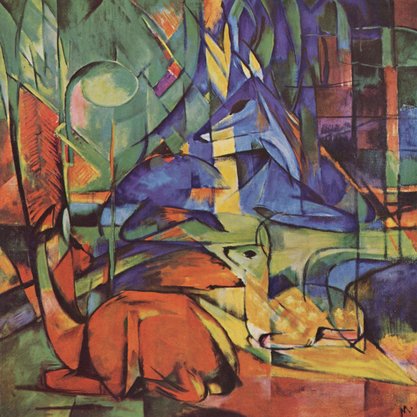Article
Wassily Kandinsky (1866-1944) By Washton Long, Rose Carol
Article
Kandinsky’s commitment to abstraction in painting and theory has attracted the attention of artists and critics throughout the twentieth century. His major manifesto Über des Geistige in der Kunst [On the Spiritual in Art], which described abstraction as a stimulus to a new world order, went through three editions by March of 1912. This publication as well as the establishment with the painter Franz Marc of the exhibition group and yearbook Der Blaue Reiter in 1911, insured the fame of his large-sized and vividly colored oils, some bearing titles such as Composition and Improvisation to emphasize the relation of painting with music, then thought to be the least representational and thus the most ideal of all the arts.
Like other artists and writers of his generation who had absorbed symbolist, theosophical, and anarchist beliefs, Kandinsky felt that he had to engage his audience in a struggle to understand his painting in order to lead them to a greater awareness of the cosmic orders. Naturalism was too descriptive of the physical world, but in 1912 he did not believe that his audience, and even others artists, were ready for abstraction.




